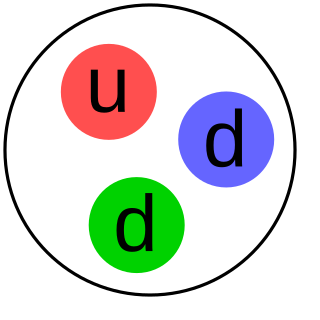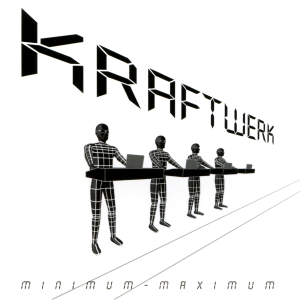| Look up radioactivity in Wiktionary, the free dictionary. |
Radioactivity is the property of spontaneous nuclear decay, or the frequency of that decay.
Radioactivity may also refer to:
| Look up radioactivity in Wiktionary, the free dictionary. |
Radioactivity is the property of spontaneous nuclear decay, or the frequency of that decay.
Radioactivity may also refer to:
| This disambiguation page lists articles associated with the title Radioactivity. If an internal link led you here, you may wish to change the link to point directly to the intended article. |
A radionuclide is an atom that has excess nuclear energy, making it unstable. This excess energy can be used in one of three ways: emitted from the nucleus as gamma radiation; transferred to one of its electrons to release it as a conversion electron; or used to create and emit a new particle from the nucleus. During those processes, the radionuclide is said to undergo radioactive decay. These emissions are considered ionizing radiation because they are powerful enough to liberate an electron from another atom. The radioactive decay can produce a stable nuclide or will sometimes produce a new unstable radionuclide which may undergo further decay. Radioactive decay is a random process at the level of single atoms: it is impossible to predict when one particular atom will decay. However, for a collection of atoms of a single element the decay rate, and thus the half-life (t1/2) for that collection, can be calculated from their measured decay constants. The range of the half-lives of radioactive atoms has no known limits and spans a time range of over 55 orders of magnitude.

In nuclear physics, a decay product is the remaining nuclide left over from radioactive decay. Radioactive decay often proceeds via a sequence of steps. For example, 238U decays to 234Th which decays to 234mPa which decays, and so on, to 206Pb :
The becquerel is the SI derived unit of radioactivity. One becquerel is defined as the activity of a quantity of radioactive material in which one nucleus decays per second. For applications relating to human health this is a small quantity, and SI multiples of the unit are commonly used.

Radioactive decay is the process by which an unstable atomic nucleus loses energy by radiation. A material containing unstable nuclei is considered radioactive. Three of the most common types of decay are alpha decay, beta decay, and gamma decay, all of which involve emitting one or more particles or photons. The weak force is the mechanism that is responsible for beta decay.

Positron emission or beta plus decay is a subtype of radioactive decay called beta decay, in which a proton inside a radionuclide nucleus is converted into a neutron while releasing a positron and an electron neutrino (νe). Positron emission is mediated by the weak force. The positron is a type of beta particle (β+), the other beta particle being the electron (β−) emitted from the β− decay of a nucleus.

Proton emission is a rare type of radioactive decay in which a proton is ejected from a nucleus. Proton emission can occur from high-lying excited states in a nucleus following a beta decay, in which case the process is known as beta-delayed proton emission, or can occur from the ground state of very proton-rich nuclei, in which case the process is very similar to alpha decay. For a proton to escape a nucleus, the proton separation energy must be negative—the proton is therefore unbound, and tunnels out of the nucleus in a finite time. Proton emission is not seen in naturally occurring isotopes; proton emitters can be produced via nuclear reactions, usually using linear particle accelerators.
Specific activity is the activity per quantity of a radionuclide and is a physical property of that radionuclide.

Radio-Activity is the fifth studio album by German electronic band Kraftwerk, released in October 1975. The band's first entirely electronic album, it is a concept album organized around the themes of radioactive decay and radio communication.

Nuclear fission products are the atomic fragments left after a large atomic nucleus undergoes nuclear fission. Typically, a large nucleus like that of uranium fissions by splitting into two smaller nuclei, along with a few neutrons, the release of heat energy, and gamma rays. The two smaller nuclei are the fission products..

Neutron activation is the process in which neutron radiation induces radioactivity in materials, and occurs when atomic nuclei capture free neutrons, becoming heavier and entering excited states. The excited nucleus decays immediately by emitting gamma rays, or particles such as beta particles, alpha particles, fission products, and neutrons. Thus, the process of neutron capture, even after any intermediate decay, often results in the formation of an unstable activation product. Such radioactive nuclei can exhibit half-lives ranging from small fractions of a second to many years.

Minimum-Maximum is the first official live album release by Kraftwerk, released in June 2005, almost 35 years after the group gave its first live performance. The album features two CDs of tracks recorded on the group's world tour during 2004, including concerts in Warsaw, Moscow, Berlin, London, Budapest, Tallinn, Riga, Tokyo, and San Francisco.
Radiochemistry is the chemistry of radioactive materials, where radioactive isotopes of elements are used to study the properties and chemical reactions of non-radioactive isotopes. Much of radiochemistry deals with the use of radioactivity to study ordinary chemical reactions. This is very different from radiation chemistry where the radiation levels are kept too low to influence the chemistry.

Cluster decay, also named heavy particle radioactivity or heavy ion radioactivity, is a rare type of nuclear decay in which an atomic nucleus emits a small "cluster" of neutrons and protons, more than in an alpha particle, but less than a typical binary fission fragment. Ternary fission into three fragments also produces products in the cluster size. The loss of protons from the parent nucleus changes it to the nucleus of a different element, the daughter, with a mass number Ad = A − Ae and atomic number Zd = Z − Ze, where Ae = Ne + Ze. For example:
Fluorine (9F) has 17 known isotopes, with atomic masses ranging from 14F to 31F, and two isomers. Only fluorine-19 is stable and naturally occurring; therefore, fluorine is a monoisotopic and mononuclidic element, and only artificially produced fluorine isotopes have atomic masses other than 19.

Minimum-Maximum is a double DVD created by Kraftwerk, consisting of live shows performed during their 2004 world tour. The set was released in Germany on December 2, 2005, in the UK on December 5, 2005 and December 6, 2005 in the US, Japan and Australia.
Induced radioactivity, also called artificial radioactivity or man-made radioactivity, is the process of using radiation to make a previously stable material radioactive. The husband and wife team of Irène Joliot-Curie and Frédéric Joliot-Curie discovered induced radioactivity in 1934, and they shared the 1935 Nobel Prize in Chemistry for this discovery.

"Radioactivity" is a song by the German electronic music band Kraftwerk. It was released in May 1976 as the lead and only single from their fifth studio album, Radio-Activity (1975).
Long-lived fission products (LLFPs) are radioactive materials with a long half-life produced by nuclear fission of uranium and plutonium.

Banana equivalent dose (BED) is an informal measurement of ionizing radiation exposure, intended as a general educational example to compare a dose of radioactivity to the dose one is exposed to by eating one average-sized banana. Bananas contain naturally occurring radioactive isotopes, particularly potassium-40 (40K), one of several naturally-occurring isotopes of potassium. One BED is often correlated to 10−7 sievert ; however, in practice, this dose is not cumulative, as the principal radioactive component is excreted to maintain metabolic equilibrium. The BED is only meant to inform the public about the existence of very low levels of natural radioactivity within a natural food and is not a formally adopted dose measurement.

Radioland: Radio-Activity Revisited is a studio album by English improvising pianist and synthesiser player Matthew Bourne (musician) and French electronic composer Franck Vigroux, created to mark the 40th anniversary of Kraftwerk's seminal album Radio-Activity. It was released digitally by The Leaf Label on 4 December 2015, with physical copies following in early 2016.